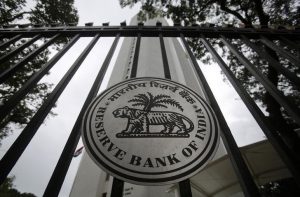The way forward to conduct simultaneous elections

KV Prasad Jun 13, 2022, 06:35 AM IST (Published)
 Listen to the Article (6 Minutes)
Listen to the Article (6 Minutes)
Summary
As a concerned citizen, I summarise here the stated objectives of and rationale for the proposal.
Amit Shah, BJP party chief, has reportedly written to the Law Commission in favour of holding simultaneous polls.
He said simultaneous polls is not only a concept but a principle that has been successful in the past and that it can be implemented.
In the said letter to commission chairman Justice B S Chouhan, Shah said that the ‘one election’ idea can work as it will keep in check the expenditure and make sure the nation is not in “election mode” throughout the year.
Here is an analysis of simultaneous polls by YV Reddy:
A proposal for conducting simultaneous elections to the parliament and all the state Assemblies is under serious consideration by the Union government.
The Union government has sought the views of the general public on my.gov web portal consequent upon the President and Prime Minister pitching their support to the idea of simultaneous polls.
As a concerned citizen, I summarise here the stated objectives of and rationale for the proposal in order to analyse and suggest a way forward, an alternate agenda for electoral reform.
I argue that the proposal as explained in official documents is based on wrong assumptions, and that the arguments made in favour of the proposal are weak. I explain that they understate the critical impact the proposal can potentially have on the level playing field between national and regional parties in the electoral process, and that the motives for pursuing the proposal are not clear.
However, I concede that the proposal seeks to address some weaknesses in our system, which should be addressed urgently. Hence, an alternate agenda for electoral reforms to strengthen democracy, federalism and unity of the country, is suggested, as the way forward.
The alternate agenda contains five items of which consideration of simultaneous polls will be, if at all, at the end.
These are:
First, the efficacy and functioning of the Model Code of Conduct including its effectiveness and desirability should be reviewed and the design modified as considered appropriate by the Election Commission.
Second, the experience with anti-defection law in terms of the functioning of the Parliamentary and federal systems has to be reviewed, and amendments made as appropriate.
Third, satisfactory governance arrangements within the political parties have to be made a condition for continued recognition of the political parties by the Election Commission.
Fourth, all reforms in electoral system should be considered within our Parliamentary system and the unique features of our federalism through which the country’s unity has been strengthened over seven decades.
Finally, the desirability of simultaneous elections has to be considered if that is considered necessary after undertaking the above tasks. The alternate agenda proposed is not inconsistent with the time frame indicated by the two official documents for possible implementation.
Objective
The objective of the proposal for simultaneous polls is best summed up in the concluding para of the Seventy Ninth Report of the Parliament of India (Rajya Sabha) titled “Feasibility of Holding Simultaneous Elections to the House of People (Lok Sabha) and State Legislative Assemblies” dated December, 2015 (hereinafter referred to as Report).
“The Committee is conscious of the fact that holding simultaneous elections may not be feasible in 2016 or even in a decade but it expresses confidence that a solution will be found to reduce the frequency of elections which relieve people and government machinery being tired of frequent electoral processes. This is important for India if it is to compete with other nations in developmental agenda on real time basis as robust democratic country.” (para 20).
Thus, the stated objective of the proposal is to enable India to compete with other nations “in developmental agenda”. But, the available data shows that India is likely to record the highest or second highest growth in the world. How do we say that it is not able to compete in “developmental agenda”? Is it possible to assume that the standards of governance in the country would improve with simultaneous elections? The justification can, perhaps, be found in the penultimate sentence of the above para, which refers to the need to reduce the frequency of elections “which relieve people and government machinery being tired” of frequent elections. There is no firm evidence of people being less enthusiastic in their participation in elections when the frequency was higher or of the bureaucracy being tired to an extent that such a drastic solution is needed. On all accounts, the participation of voters in India in the elections is higher than in most other countries in the world.
Participation has not been declining over the period spanning simultaneous elections initially and otherwise subsequently. The hectic activity and the increasing amounts spent by all stake holders does not point to their being tired.
In support of the proposal, the Report gives precedents of only two countries practicing simultaneous polls, namely, South Africa and Sweden (para 5). To buttress the case, the Report quotes the recommendations of Law Commission (para 6.0). Read carefully, the recommendations point to the need for stability and the desirability of simultaneous elections as a ‘rule’, and adds that exceptions are inevitable. The recommendations by the Law Commission seem to be in the nature of an exhortation to the Election Commission.
The Report points out that elections were held simultaneously soon after independence and hence that there should be no objection to the proposal. The fact that simultaneity is contextual or was “happenstance” is recognised by the Report itself. True, simultaneous polls are feasible but that does not make it desirable, worthy of a rule.
The Report narrates several standalone justifications for holding simultaneous elections (Paras 6.2 to 6.5). These are avoidance of (a) massive expenditure; (b) the policy paralysis and governance deficit; (c) frequent disruption to normal life, such as disruptions to traffic pollution, essential services; and (d) demands on security forces for conduct of elections over prolonged period.
On (a), the savings in expenditure, and its magnitudes on a comparative basis between the current system and simultaneous elections are not clearly estimated in the Report. The Election Commission itself does not seem to subscribe to the idea of significant savings through simultaneous polls (Para 7.1). On (b), there is evidence of frequent constraints on policy making and I will address this below. As regards (c) and (d), a case has been made for minimising the inconvenience and burden on citizens on account of elections. It is true that some of the government staff at state level has to be on election duty for about seven days, and this is not reflected as expenditure. Escalating costs of maintaining law and order and administrative inefficiencies are more general issues and not specific to electoral cycles.
We notice that presumably prompted by the questions posed to it, the suggestions of the Election Commission to the Parliamentary Committee for the conduct of simultaneous elections explain in detail the implementation aspects (Para 7.0). The Report adds that Election Commission of India also “pointed out” several difficulties which might be encountered for conducting simultaneous elections. As per the Report, the Commission expects an expenditure of Rs. 9,284.15 crores for procurement of additional machines for simultaneous elections which have to be replaced every fifteen years. They will have to be stored in warehouses which entail additional expenditures.
In essence, as para 19 put it, the Report seeks to “open a debate” on the subject; and a case is made out “in the larger context of economic development”. To that extent, the Report is commendable.
Analytics
The analytics behind the proposal are described in detail in a Discussion Paper titled “Analysis of Simultaneous Elections : The “What”, “Why” and “How” by Bibek Debroy and Kishore Desai of NITI Aayog in 2017 (hereinafter referred to as Discussion Paper). The arguments in favour of the proposal are summed up in Para 3.2 of the Discussion Paper:
The paper broadly categorises key adverse consequences of the existing electoral cycle into: (a) Impact on development programmes and governance due to imposition of Model Code of Conduct by the Election Commission; (b) Frequent elections lead to massive expenditures by Government and other stakeholders; (c) Engagement of security forces for significantly prolonged periods and (d) Other Issues as described in para 3.27 of the Discussion Paper: Frequent elections disrupt normal public life; frequent elections perpetuate caste, religion and communal issues across the country; and frequent elections adversely impact the focus of governance and policy making.
A close scrutiny of the above arguments in favour indicates the weakness of the arguments.
Firstly, if the Model of Code of Conduct, a code devised by Election Commission, is beset with problems, the first step should be to revisit it and review the working. Has the Code of Conduct been effective or is it superfluous? If the electorate is so enlightened, as claimed by the Paper, to distinguish between choices for Parliament and Legislatives in simultaneous election, it should be enlightened enough to see through the game of influencing the elections by politically motivated policy actions on the eve of elections. So, the priority for review should be the continued usefulness of Code of Conduct.
Secondly, savings on expenditures for conduct of elections by government in a simultaneous manner are not clear. The paper mentions that expenditure by thbe Union government for conducting Lok Sabha elections was Rs 1,115 crore for 2009 elections and Rs.3,870 crores for 2014 elections.
Ideally, the amount spent for conduct of elections should be considered as a proportion of total expenditures in the budget for appreciating the budgetary impact (Para 3.15). It appears that such expenditures are miniscule as a percentage of the total budget. If so, savings will be miniscule. The following table gives the expenditure incurred on elections in the concerned year by the Union Government.
The framework for expenditure is: for Lok Sabha elections, Union bears all expenses, and for state elections, the state concerned bears all the expenses. If they are concurrent, expenses are shared 50:50 basis. All expenditures towards law and order be it Lok Sabha or State, the States share the cost.
In a way, states rather than the Union should be more concerned with cost in the conduct of simultaneous polls, vis-a-vis the current system. In fact, all the costs of standalone assembly elections are entirely borne by states. There is no evidence that states are at the forefront in pleading for simultaneous polls.
Thirdly, engagement of security forces for prolonged period is a reflection of factors other than the electoral system. Is the problem simultaneous elections or law and order? It will be interesting to compare the expenditure on security forces deployed for the personal security of legislators and Parliamentarians in 1950, 1970 and now.
Fourthly, the other issues raise interesting questions relating to adverse impact on normal activity, on current system on caste and focus on governance.
Any election is a diversion from normal activity. So, where, how and when does one draw the line between necessary and not necessary diversion? Is this diversion new or proving to be not worth-while now? It is not clear how caste and communal issues are brought out in election times only. How many communal riots have coincided with elections? The argument that frequent elections are a diversion from focus of governance is strange because elections are to be held to ensure legitimacy of governance. Simultaneous polls do not enhance but could dilute the legitimacy with periodic interruption to functioning of elected government in some state or other.
What are the arguments against?
They are listed in para 4.4 of Discussion Paper under three headings: operational feasibility; impact on voter behaviour and the undermining of accountability of politicians. It addresses these concerns also. The paper explains feasibility can be worked out through constitutional and legal changes. I agree that the task is complex, as recognised by the paper.
The potential impact on behaviour may give a clue to the motives for the proposal.
Motives
It is no secret that in recent years, whenever simultaneous elections are held, candidates chosen for election to Parliament by political parties undertake to finance party candidates for Assembly elections. The non-electoral gains out of electoral victory in Parliament are infinitely more than at the state level. National parties have what may be described as “economies of scale” if elections are held simultaneously with a clear disadvantage for regional parties, both in Parliamentary and legislative levels.
The paper recognised relevance of this aspect indirectly when it states:
“The primary hypothesis of this criticism is that Indian voters are not mature / informed enough to differentiate between the voting choices for State Assembly and Lok Sabha in case simultaneous elections are held. This situation could lead to – a) National issues impacting electorate’s behavior for voting in State Assembly elections; or b) State issues impacting electorate’s behavior for voting in Lok Sabha elections. As a result, voter behavior gets influenced and he/she may vote for the same political party, which in most cases may be larger national parties.” (Para 4.4.b).
An interesting part of the paper is in paragraph 4.11 and 4.12. They deal with available evidence indicative of possible advantage for national parties over regional parties in simultaneous polls. If that be the case, there could be harm to the federal democratic structure of the Indian polity. However, such concerns are somewhat summarily dismissed in paragraph 4.16, which states:
“To sum it up, correlating a particular parameter (simultaneous timing of elections) to explain election results would be over-simplifying the complexity of voting behaviors and undermining the maturing of Indian electorate as well. Together the above arguments clearly indicate that there is no strong basis to conclude that simultaneous elections should not be considered.”
Independent analysis has shown that voter participation in Parliamentary elections tends to be high when simultaneous polls are held. Surely, this is indicative of the impact on voter behaviour. Such impact could be beyond mere participation but extend to choices.
An unstated motive may be to enhance stability through simultaneous polls which would add to nation building efforts. The belief in political stability being an advantage by itself is shared by many. The evidence available shows the importance of “political system stability” more than the “political stability”. The system-stability has been demonstrated by the successful management of balance of payments crisis, initiation of reform and consistent high growth under a series of coalition governments since 1990. Did our economy do better when there were simultaneous elections or otherwise?
The motive may also be to overcome the difficulties faced by those elected as Prime Minister not being able to fulfill the promises that they delivered at the time of Parliamentary elections. The problem arises mainly because Prime Ministerial candidates make promises on subjects that are pre-dominantly in the jurisdiction of the states and not the Union Government.
The paper concludes with a detailed proposal that captures the complexity of the task.
“Building further upon the above idea proposed by the Parliamentary Standing Committee which they recommended after extensive analysis and stakeholder consultations, it is suggested that simultaneous elections be considered in two-phases. Phase I is suggested to be in sync with that of the Lok Sabha elections i.e. April–May 2019. Phase II is suggested approximately mid-way in the term of the Lok Sabha i.e 30 months after Phase I – around October–November 2021. Thereafter, it is envisaged to conduct elections every 2.5 years (30 months) in the country once the entire electoral cycles of Lok Sabha and all State Assemblies are synchronized by December 2021.” (Para 5.15).
Way Forward
There are admittedly several issues relating to functioning of our election system that impinge both on law and order, and development. They need to be addressed; but placing the proposal for simultaneous polls as a priority for debate gives an impression of diverting attention from major issues. Hence, the proposal should be considered in a broader context, in particular those which gave rise to the proposal.
Firstly, how effective has been the Moral Code of Conduct in achieving the objective of ruling party influencing election outcomes? Is it possible to help the voters become conscious of such practices, rather than have “a shut period” for unfettered governance by elected governments. In a way, the present system is demanding energies of Election Commission to give a ruling, based on limited information on policy decisions or expenditure decisions. Rulings of the Commission are based on an assessment of impact and urgency. Perhaps the Election Commission could comment on proposed decisions rather than prohibit decisions that are likely to influence the outcomes. In fact, it could outsource this function of commenting on violation of Code of Conduct to a group of Eminent Persons and putting it in the public domain. This would give relief to the Election Commission to eliminate restraints on legitimate functioning of government, and empower people with full information. If people could distinguish between national party manifesto and state manifesto in simultaneous polls, they should be able to decide whether specific decisions are meant to influence the outcomes. In any case, it is time the current working of the Code of Conduct is evaluated by an independent body to be appointed by Election Commission itself. A revision of the Model Code of Conduct system to reduce its adverse impact would render contentious recourse to simultaneous elections somewhat superfluous.
Secondly, there are serious concerns about the functioning of the anti-defection law. Has it reduced political instability, and if so, at what cost? Has the system resulted in authoritarianism in the party? For instance, a member elected to the Rajya Sabha is supposed to represent the interests of the state that elects him or her, but now he or she is constrained by party discipline. Even election to the Rajya Sabha by Assemblies are de-facto by political parties. Even opportunity to participate in Lok Sabha and Rajya Sabha, in terms of time and slot, is in reality decided by the party leadership with the agreement of the Speaker or Chair. Is it possible that the proceedings or lack of proceedings in Parliament reflect the behest performance, at the behest of party leadership? In fact, there is virtual abdication of responsibilities by a member when a party authorizes its leadership to decide on contentious matters. Further, in actual implementation of the law, several distortions are noticed depending on the Speaker’s inclinations. Ideally, anti-defection law should be restricted to voting on a no confidence motion only. A review of working of anti-defection law, to be independent, has to be a non-governmental initiative.
Thirdly, the downside of the anti-defection law is compounded by the absence of sound governance practices in the political parties. Office bearers are routinely nominated by the leaders who are authorized to do so. The nominated office bearers in turn elect leaders who have nominated them. Such authorization is not even subject to the fig leaf of subsequent formal approval. It must be recognised that standards of governance in political parties is critical for sound functioning of democracy and hence integral to the core duties of Election Commission. The Central Election Commission which recognises a political party should have the fiduciary responsibility to ensure good governance; and implicitly to enforce it to the point that it should be able to derecognize the party if inner party democracy is not observed.
Finally, the proposal for simultaneous polls has significant implications for the functioning of federalism in India, and indeed the basic structure of the Constitution.
Dr. Ambedkar laid out the unique features of our Constitution when he introduced the draft Constitution for approval of the Constituent Assembly. He explained the rationale for our Parliamentary System with continuing accountability and for a Union of States. The latter eschewed separate citizenship for Centre and State but provided for separate legislative bodies with division of powers.
It is useful to recall the grand design that Dr. Ambedkar crafted. On form of government, he said: “The daily assessment is done by members of Parliament, through questions, Resolutions, No-confidence motions, Adjournment motions and Debates on Addresses. Periodic assessment is done by the Electorate at the time of the election which may take place every five years or earlier. The Daily assessment of responsibility which is not available under the American system is it is felt far more effective than the periodic assessment and far more necessary in a country like India. The Draft Constitution in recommending the Parliamentary system of Executive has preferred more responsibility to more stability”.
Is the proposal not tilting in favour of more stability and less responsibility?
On the form of the Constitution, Dr. Ambedkar said: Two principal forms of Constitution are known to history – one is called Unitary and the other Federal. The two essential characteristics of a Unitary Constitution are: (1) the supremacy of the Central Polity and (2) the absence of subsidiary Sovereign polities. Contrariwise, a Federal Constitution is marked (1) by the existence of a Central polity and subsidiary polities side by side, and (2) by each being sovereign in the field assigned to it. In other words, Federation means the establishment of a Dual Polity. The Draft Constitution is, Federal Constitution inasmuch as it establishes what may be called a Dual Polity. This Dual Polity under the proposed Constitution will consist of the Union at the Centre and the States at the Periphery each endowed with sovereign powers to be exercised in the field assigned to them respectively, by the Constitution.”
On the link between dual polity and dual service, he says: “The dual polity which is inherent in a federal system as I said is followed in all federations by a dual service. In all Federations there is a Federal Civil Service and a State Civil Service. The Indian Federation though a Dual Polity will have a Dual Service but with one exception”. That is the All India Services.
The proposal for simultaneous polls cuts at the root of this grand design of the Constitution that served us well so far.
In 1947, many people especially in the UK doubted whether India will survive as a united country. In the 1960s, Selig Harrison wrote that either India will break up or become authoritarian. That did not happen.
Ironically, the UK is facing the prospect of secession by Scotland and Spain by Catalonia. Perhaps they took unity for granted and did not accommodate diversity.
Way forward, the proposal for simultaneous polls should be deferred by addressing the concerns of those who advocate it within our Constitutional structure – a structure that served the country very well for 70 years – a singular achievement in South Asia and, perhaps, the whole developing world.
The Niti Aayog Discussion Paper recognises that this simultaneous polls is only one element, a first step, in the electoral reforms. It says:
“As is the case with long-term structural reforms, implementing this measure would also cause some short-term pain. However, this would be a stepping stone towards improved governance and a larger initiation of “electoral reforms” – a desperately needed measure to re-boot the Indian polity.”
The alternate agenda presented here is precisely on the same lines except that the simultaneous polls is not the first but the last of the agenda for reform.
To sum up, the gains out of the proposal are uncertain, the process complex, and the outcomes potentially very risky, even at low probability.
YV Reddy is a former governor of the Reserve Bank of India.
This article was originally published on April 6, 2018. It has been resurfaced as Prime Minister Narendra Modi, who chaired his first all-party meet on Sunday, has invited party presidents to a meeting on June 19 to discuss “one nation, one election”.

Elon Musk forms several ‘X Holdings’ companies to fund potential Twitter buyout
3 Mins Read
Thursday’s filing dispelled some doubts, though Musk still has work to do. He and his advisers will spend the coming days vetting potential investors for the equity portion of his offer, according to people familiar with the matter

KV Prasad Journo follow politics, process in Parliament and US Congress. Former Congressional APSA-Fulbright Fellow










 Listen to the Article
Listen to the Article  Daily Newsletter
Daily Newsletter


















